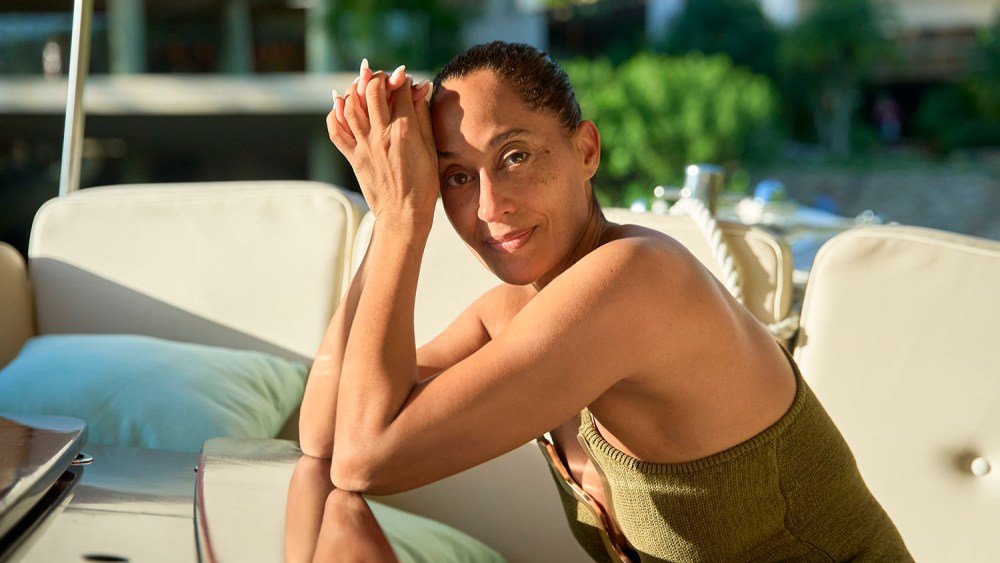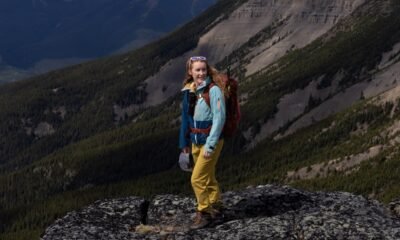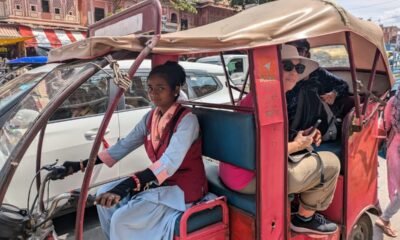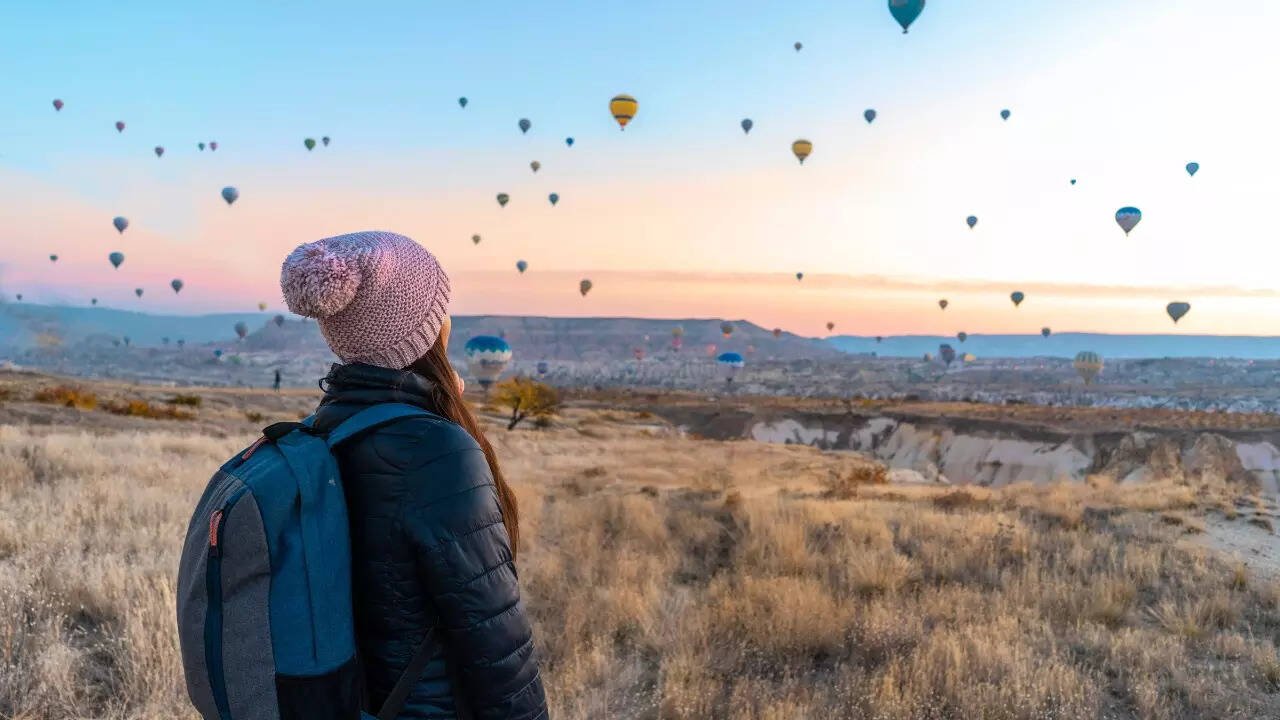Solo Travellers
Safaris aren’t just for newlyweds and families. Here’s what it’s like to go alone
Safaris are a bit like grown-up summer camps and the number of solo travellers has been steadily, if quietly, growing.Supplied
“You’re here by yourself?” The taxi driver sounded surprised. Or, perhaps, simply unused to ferrying lone, middle-aged women to Tanzania’s Kilimanjaro International Airport, where I planned to hop a propeller plane to a dirt airstrip in the middle of the country’s vast savannah.
I’m married (happily); I have friends (I swear). Yet going on safari alone intrigued me, because even as solo travel has soared in popularity, safaris retain their reputation as the realm of families and honeymooners. I wondered what it would be like to experience one of the world’s wildest places by myself – and had recently learned that the number of solo safari-goers has been steadily, if quietly, growing.
“It’s definitely a trend we’re seeing,” said Monique Langue, a safari expert with go2Africa from Cape Town, South Africa. In 2024, around 13 per cent of the company’s travellers were on their own, an 8-per-cent increase from the previous year. The trips aren’t just for loners, Langue said. “You can be a solo traveller, join a small group and meet some new people,” she said. “But for others, travelling alone is really about that experience of a solo trip.”
I was invited to discover two of Africa’s top safari camps in both price and guest experience – and so planned a two-part solo trip encompassing both sides of the wildlife-rich Mara–Serengeti ecosystem that spans the border between Kenya and Tanzania. First, a stay at Singita Grumeti in Tanzania’s 350,000-acre Grumeti Game Reserve. Next, I’d fly to Maasai Mara National Reserve, in Kenya, where I’d be sleeping in one of the well-appointed, canvas-sided tents at andBeyond Bateleur Camp.
The suite at the Singita Faru Faru lodge overlooks the roiling Grumeti River.Supplied
“What do you most want to see? What we do is totally up to you,” said Grumeti safari guide David Mnazi, when my plane touched down at the reserve’s private airstrip. If solo trips can occasionally leave travellers feeling at loose ends, I quickly found that, with their activity-packed schedules, safaris are a bit like grown-up summer camp.
During my stay at Grumeti, Mnazi would be my guide for twice-daily game drives, designed to catch the morning and evening hours when animals are most active. Within minutes of leaving the airstrip, we’d seen the lilac-breasted roller – a flamboyantly coloured bird – followed by warthogs snacking on grass in a gossipy knot. I relished the flexibility that the solo drives gave me. At times, I chose low-key birdwatching feet from the lodge; another day, we decided to cross the reserve in pursuit of a pride of lions, who we found drowsing in the thorny crowns of acacia trees.
In the heat of the day, I retreated to the Singita Faru Faru lodge, where my suite overlooked the roiling Grumeti River. I savoured the long afternoons: my netting-swathed bed hinted at indulgent naps, while a watercolour painting set invited creative interludes. The minibar bar was stocked with chilled South African chenin blanc. Tucked in the corner was a cork yoga mat that I pulled out each day, spreading it on my veranda and following the step-by-step mindfulness meditation instructions set thoughtfully alongside.
In 2024, around 13 per cent of safari company Go2Africa’s travellers were on their own, an 8 per cent increase from the previous year.andBeyond Bateleur
Many solo safari trips, like mine, come with hefty single supplement fees that may explain the relative rarity of going it alone. That may be changing. At Singita, where a week-long safari costs as much as a compact car, lone travellers aren’t charged more. Meanwhile, andBeyond waives their 50 per cent single supplement fee during two low seasons, from mid-January through April plus November through late December.
“Camps and lodges are starting to see the value in being a little more flexible when it comes to solo travellers,” Langue said. It takes some looking, she acknowledged, but noted that going in the rainy season, as I did, makes such deals easier to find. In quiet periods, she’s had success negotiating down single supplements even when they’re listed in the official rates. Flights are more affordable in the low season, too. Visitors to remote lodges might even find themselves alone on the plane, as I did on an early morning flight to the second game reserve on my safari itinerary.
“Welcome to your private plane,” said the co-pilot, from the open cockpit of the twin-engine propeller AirKenya flight from Nairobi’s Wilson Airport. “Next stop, Maasai Mara National Reserve.” A veteran andBeyond guide, Wilson Omari, greeted me on the ground with a flute of Champagne, and promptly steered me past a herd of surly-faced buffalo.
Kenya’s Maasai Mara National Reserve as seen from andBeyond’s Bateleur Camp.andBeyond Bateleur
Our first official game drive wouldn’t begin until later that day, when we’d go out in search of the black rhino who’d recently been spotted with her young calf. (When we found them, looking placid and alien at the forest’s edge, I squealed in undignified delight but with no other guests nearby to laugh, who cares?).
Until then, I’d luxuriate in a tent that stretched the meaning of the word to its breaking point. At its centre was a plush, leather-trimmed bed with room for a crowd. Its gin bar, cut-glass sherry decanter and vast copper bathtub seemed especially decadent when paired with views of giraffes wandering nearby grassland – explorer-inspired romance upholstered with cheekily Victorian creature comforts.
andBeyond supports a rewilding project with a tree nursery that provides seedlings to the surrounding villages.Supplied
One morning, I skipped my game drive to join Simon Saitoti, andBeyond’s community and impact officer, for a hike through nearby Nyekweri forest, which provides critical habitat for animals, including the endangered giant pangolin, but has faced rapid deforestation.
Saitoti, a Maasai elder, helps oversee the andBeyond-supported rewilding project currently restoring it, with a tree nursery providing seedlings to the surrounding villages. As we searched for pangolin tracks amid shady groves of wild olives and black ironwood trees, he explained that the forest has exceptional environmental significance, but also a cultural one.
“This is where young Maasai men become warriors,” he said. “When I was a young man, I spent a month in this forest, with no clothes, eating nothing but beef and herbs . . . men from the village came to me, and spoke words to change my heart and make me brave.” Such traditions depended on the forest’s ongoing existence – Saitoti saw his people’s future entwined with that of the ecosystem he was working to protect.
Many solo safari trips feature a hefty single supplement fee, but that may be changing.Supplied
On my last game drive at the camp, I was joined by newlyweds Maddie and Sachin Verma – beatific and just a week past their vows.
Together, we watched a family of elephants clustering around a tiny calf, and sipped cocktails on a bluff high above the Maasai Mara at sunset.
“Would you like to join us for dinner?” Sachin asked, graciously, when we returned to camp. “No thanks,” I replied. “It’s my last night, and I think I’d like to eat alone.”
The Singita Faru Faru Lodge boasts a minibar stocked with chilled South African chenin blanc and even a cork yoga mat.Supplied
If you go
All-inclusive safaris at Singita Grumeti Faru Faru start $2,963 a person per night, includes meals, accommodation, two daily game drives, transfers to the airstrip and excellent service. For more, visit singita.com
All-inclusive stays in luxury tents at andBeyond Bateleur camp start at $1,687 per person per night, single supplement waived during low season. Includes meals, accommodation, safari activities, laundry, airport transfers. For more, visit singita.com or andbeyond.com.
Lone travellers aren’t charged more at Singita, while andBeyond waives their 50 per cent single supplement fee during two low seasons, from mid-January through April plus November through late December.Supplied
Special to The Globe and Mail
The writer was a guest of Singita Grumeti and andBeyond Bateleur Camp. They did not review or approve the story before publication.
Solo Travellers
Solo Travel Just Got Smarter: 8 Tips Every Traveller Needs to Know – The Times of India
Solo Travellers
Kim Jun-ho flirts with shop assistant before upcoming wedding on Solo Travel 4 – CHOSUNBIZ – Chosun Biz
Solo Travellers
Tracee Ellis Ross on Creating ‘Solo Traveling,’ Teases Season 2

Tracee Ellis Ross is known for starring on hit television shows like “Black-ish” and “Girlfriends.” But now, audiences are getting up close and personal with Ross in her hit Roku Original series, “Solo Traveling with Tracee Ellis Ross.” The series debuted to rave reviews last month and quickly became the most-watched unscripted series in Roku history, earning a Season 2 renewal.
Ross has always adored traveling, but it took a moment for the Emmy-nominated actress to realize that fans were flocking to her social media accounts to get a glimpse at her stunning vacations. “I came home from my regular summer trip that I do with my friends every year,” she tells Variety at the Martha’s Vineyard African American Film Festival (MVAAFF), where the series screened to a sold-out crowd on Friday night. “And the guy that was helping me at the airport was like, ‘Girl, every year we wait for your first dip and we wait for your Paris fashion.’ He said, ‘I can’t even wait to see what you’re wearing.’ I said, ‘Are you serious?!’”
Upon realizing that there was an audience that was intrigued by her travels, Ross took the idea and ran with it. “I called my manager and I was like, ‘Is there any world where we could do a travel show that felt like the volume was turned up slightly from my social media?’ she says. “And he was like, ‘I don’t know, let’s figure it out.’” From there, “Solo Traveling with Tracee Eliis Ross” was born. But she had one stipulation: “For me, a lot of it is about the prep and packing, and if we couldn’t show that, then I didn’t want to do it. No one understood that [at] first.’”
Once she got production to buy into the packing segments, though, Ross was on a roll. The first season of “Solo Traveling,” which consists of three episodes, follows Ross (and her iconic wardrobe) as she adventures in Morocco, Mexico and Spain. Like most travel series, it showcases gasp-worthy locations, but what makes the show unique is the actor’s vulnerability, her distinct worldview and how she handles the emotional highs and lows that come with being alone in a new environment.
Solo traveling has been a part of Ross’s life for over 25 years; she took her first voyage in her 20s. “I had finished this show and I had more money than I’ve ever had, which is not a lot,” she recalls. “But I had money, and I thought, ‘I want to go away.’ My friends were working, and no one was available to go with me. And I was like, ‘I’m just going to go.’ I had seen the Pink Sands Resort [in the Bahamas] in Condé Nast Traveler. I don’t remember being frightened or anything like that. I felt safe and comfortable, and I remember it was a great experience.”
That holiday informed the way Ross travels to this day. “I talk about the fact that there are all different kinds of solo travel,” she explains. “Some people travel for adventures. Some people travel to meet people. Some people travel to escape their daily lives. Some people travel to decompress, like I do. Since then, I think I go on at least one solo trip a year if not two.”
While Ross is an experienced traveler in real life, it took a bit of work to get the tone of the show just right. “It was a delicate balance,” Ross explains. “Some of the first cuts that came back, they filled them in with music, and I was like, ‘No.’ It was losing the intimacy of some of these quiet, solitary moments.” Ross also notes that she travels with a skeleton crew to film the series. “I made a conscious decision not to use a stylist or hair and makeup. I was like, ‘That’s not how I travel. So it should look the way I travel.’ That was important to me,” she says. “And I found the show refreshing when I watched it.”
Safety and anxiety are barriers for many people who fear solo traveling, especially women. For Ross, safety is imperative, as is deciding what you want from your experience. “Once you determine that for yourself, you can figure out where that would be,” she says. “I like to remind people that you should ask yourself if there are parts of your identity that are the most empowered, beautiful parts of you, but perhaps might leave you vulnerable in other environments, whether that’s being LGBTQ, non-binary, a Black woman, differently abled, whatever those things are. And it might not even be those kinds of questions. It might be that I don’t like rain.”
Still, even with tons of preparation (and packing for any and all scenarios), Ross reminds us all that sometimes you can’t anticipate what might happen. For example, during her trip to Spain for episode 3, Ross had a horrific bout of food poisoning and was unable to film or even leave her hotel bed, but she wanted to keep the cameras rolling. “There was nothing I could do about it because we had a short window for shooting,” she says. “That was why I left that crying bit in. Because not only did I feel physically bad, but I felt like I was disappointing everybody. But that was what we had. And it was okay with me. We had to edit around the story because no one wants to hear the graphic behind-the-scenes. It was so fucking awful. Oh my God! But I felt it was important to leave in. It is part of what happens. Things don’t always go as planned.”
Solo traveling has also changed the way Ross views herself. Sprinkled throughout the series are gut-wrenchingly honest video diaries where Ross gets candid and emotional about loneliness and singleness. “What I love about how the show is resonating is the intention of the show,” she says. “It’s not about travel, but can you be yourself, by yourself, out in the world? Can you be who you are? It’s taken me years to discover who I am, then have the courage to be that person, and even more to live as that person. This show is an expression of living as that person. And it’s about knowing oneself, making choices that truly honor who you are and what you know about yourself. The fact that that’s what’s resonating — the sense of being responsible for your own happiness — is very moving to me.”
With fans so eager to voyage across the globe again with Ross in Season 2, she’s already considering where she’ll end up next. “When we did this season, I gave a long list of all the places I wanted to go, so there’s still a whole list of places,” she teases. “I have a dream list. I’d love to hear from other people and get new ideas. I want you to go to all the places, and we want to go along with you.”
-

 Brand Stories3 weeks ago
Brand Stories3 weeks agoBloom Hotels: A Modern Vision of Hospitality Redefining Travel
-

 Brand Stories2 weeks ago
Brand Stories2 weeks agoCheQin.ai sets a new standard for hotel booking with its AI capabilities: empowering travellers to bargain, choose the best, and book with clarity.
-

 Destinations & Things To Do3 weeks ago
Destinations & Things To Do3 weeks agoUntouched Destinations: Stunning Hidden Gems You Must Visit
-

 Destinations & Things To Do2 weeks ago
Destinations & Things To Do2 weeks agoThis Hidden Beach in India Glows at Night-But Only in One Secret Season
-

 AI in Travel3 weeks ago
AI in Travel3 weeks agoAI Travel Revolution: Must-Have Guide to the Best Experience
-

 Brand Stories1 month ago
Brand Stories1 month agoVoice AI Startup ElevenLabs Plans to Add Hubs Around the World
-

 Brand Stories4 weeks ago
Brand Stories4 weeks agoHow Elon Musk’s rogue Grok chatbot became a cautionary AI tale
-

 Brand Stories2 weeks ago
Brand Stories2 weeks agoContactless Hospitality: Why Remote Management Technology Is Key to Seamless Guest Experiences
-

 Asia Travel Pulse1 month ago
Asia Travel Pulse1 month agoLooking For Adventure In Asia? Here Are 7 Epic Destinations You Need To Experience At Least Once – Zee News
-

 AI in Travel1 month ago
AI in Travel1 month ago‘Will AI take my job?’ A trip to a Beijing fortune-telling bar to see what lies ahead | China









You must be logged in to post a comment Login